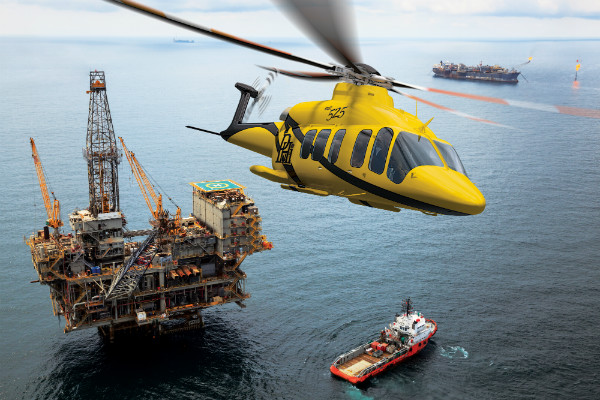The storm facing off-shore

The Bell 525 Relentless will be capable of offshore missions when it enters service in 2015.
The Cromarty Firth, a 19-mile long inlet on the Northeast coast of Scotland, is a popular place to spot bottlenose dolphins, harbour porpoises and seals. When the oil price is low you can also see unwanted oil rigs. In 2016 there was an average of 12 oil platforms stored there. There are already 16 rigs there now with more on the way.
They are just another sign of what OGUK, the trade association for the UK offshore industry, is calling “an especially bleak outlook” for its industry. The same is true for offshore markets around the world.
OGUK says that UK exploration and production (E&P) revenues could be down by half since 2018. It says that if Brent averages below $40 a barrel, the UK Continental Shelf will make a cash loss for only the third time in 40 years. The association expects 30,000 people to lose the jobs and companies to fail. It is hard to be upbeat for the offshore industry now.
Data from Air & Sea Analytics shows that last two weeks have seen a 29% reduction in the number of offshore helicopter flights worldwide compared to the same week in 2019. This partly reflects operational issues caused by Covid-19.
“From an offshore crew transfer perspective, activity is materially impacted by global macroeconomic events linked to the outbreak. Several issues are at play here including reduced manning offshore and some countries being locked down to such an extent that getting crews and equipment in/out of the country is impossible,” says Steve Robertson, founder, Air & Sea Analytics.
“For frontier countries, where the aircraft need to be flown out-of-country for planned maintenance/overhauls, this is a real issue. Furthermore, we are seeing that drilling programmes and non-essential maintenance and operations are being cancelled by cash-conscious E&P companies in the wake of very low oil prices,” says Robertson.
Bad generals always fight the last war and the big difference now and the last offshore downturn is that exploration and production companies have already cut costs. In 2015 they (and helicopter operators) were growing fast and were less efficient. It is very different now. UK offshore unit costs are already less than 50% below 2015 costs. OGUK says the UK industry produced 20% more energy in 2019 at 30% less cost than 2014.
“It is 2016 all over again,” says one former senior manager at a helicoper operator. “Actually, forget that. It is worse than 2016.”
The Cromarty Firth Port Authority (CFPA) refers to itself as the North Sea’s parking lot. Let’s hope it is not its scrapyard.
Subscribe to our free newsletter
For more opinions from Helicopter Investor, subscribe to our email newsletter.






